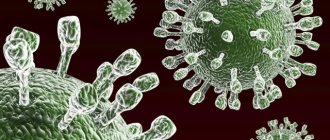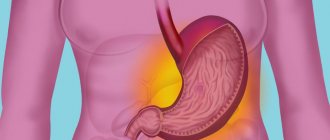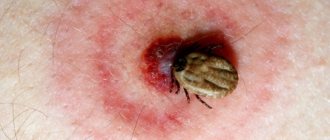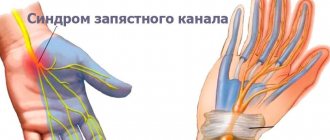Meningococcal infection is one of the most severe acute infectious diseases with various clinical manifestations of localized or generalized forms of the infectious process.
The danger of infection is that it can have a very rapid, lightning-fast development of severe forms with a high risk of death and a possible impact on the subsequent neuropsychic development of the child.
Only people get this infection. Susceptibility to meningococcus is low. The most common infection is among children: up to 80% of all patients. Children of any age are susceptible to the disease; quite often the infection affects children in the first year of life.
Cause of the disease
The disease caused by meningococcus can be severe.
The disease is caused by different strains (varieties) of meningococcus. The source of infection of a child can be a sick person or a “healthy” carrier of meningococcus. The number of such carriers for meningococcal infection is very large: for one case of the generalized form of the disease there are from 2 to 4 thousand healthy carriers of this microbe.
The carriers are usually adults, although they do not know about it, and mostly children get sick.
The pathogen lives in the nasopharynx and is released into the external environment when sneezing or talking. The danger increases when inflammation occurs in the nasopharynx. Fortunately, meningococcus is very unstable in environmental conditions: it survives no more than half an hour.
Infection occurs by airborne droplets with very close (at a distance of up to 50 cm) and prolonged contact. The infection has a pronounced winter-spring seasonality with a peak incidence from February to April.
Periodic increases in the incidence rate are recorded after about 10 years, which is associated with a change in the strain of the pathogen and the lack of immunity to it. Both isolated cases of morbidity in children and widespread cases in the form of outbreaks and epidemics are possible. During the period between epidemics, more young children get sick, and during an epidemic, more older children get sick.
Meningococcus is sensitive to antibiotics and sulfonamide drugs.
When a pathogen enters the mucous membrane of the nasopharynx, it most often does not cause inflammation: this is how a “healthy” carrier state is formed. But sometimes inflammatory changes occur in the nasopharynx, and a localized form of the disease develops: meningococcal nasopharyngitis.
Much less often (in 5% of sick children), the microbe penetrates the blood and spreads to various organs. This is how meningococcal sepsis (meningococcemia) develops.
Severe toxic syndrome occurs as a result of the destruction of meningococci (under the influence of produced antibodies or antibiotics) and the release of a significant amount of endotoxin. This may cause the development of infectious-toxic shock.
In addition to internal organs (lungs, joints, adrenal glands, retina, heart), meningococcus can also affect the central nervous system: the membranes and substance of the brain and spinal cord. In these cases, purulent meningitis (or meningoencephalitis) develops. In severe cases, pus covers the brain in the form of a cap.
After an illness and even as a result of carriage of meningococcus, persistent immunity is developed.
Classification of the disease
The interaction of meningococcus with the human body occurs in a variety of scenarios, each of which requires a special approach and treatment. In this regard, in 1976, Academician Pokrovsky developed a classification of meningococcal infection, which doctors use to this day. According to it, there are:
Localized forms:
- Carriage of meningococcus is asymptomatic;
- Acute nasopharyngitis – manifested by symptoms of acute respiratory infections;
- Pneumonia – clinically no different from other bacterial pneumonias.
Generalized forms:
- Meningococcemia is the presence of a pathogen in the blood, one of the development options is infectious-toxic shock;
- Meningitis is a purulent inflammation of the meninges; when swelling and inflammation of the brain are associated, they speak of meningoencephalitis;
- Combined – combines meningococcemia with meningitis, this is one of the most common severe forms of infection;
- Rare forms - include localizations non-specific for meningococcus (endocarditis, arthritis, iridocyclitis).
Symptoms
The incubation period can last from 2 to 10 days, usually it is short: 2-3 days.
There are localized and generalized clinical forms of meningococcal infection.
Localized:
- asymptomatic meningococcal carriage;
- meningococcal nasopharyngitis.
Generalized:
- meningococcemia (meningococcal sepsis);
- meningitis (inflammation of the membranes of the brain);
- meningoencephalitis (inflammation of both the membranes and substance of the brain);
- mixed form (a combination of meningococcemia and meningitis).
Rare forms include: meningococcal-induced arthritis, pneumonia, iridocyclitis, endocarditis.
Asymptomatic meningococcal carriage is the most common form of the disease (develops in 99.5% of all infected people). More often observed in adults. The condition does not show any signs and the person is unaware of his infection.
Meningococcal nasopharyngitis develops in 80% of patients with meningococcal infection. It manifests itself with the usual symptoms for an inflammatory process in the nasopharynx: acute onset, sore throat, nasal congestion, dry cough, headache. The temperature may rise within 37.5°C. The general condition and well-being of the child suffer little.
Upon examination, redness in the pharynx and swelling of the mucous membrane, sometimes redness of the conjunctiva, and scanty mucopurulent discharge from the nose are revealed. More often the condition is regarded as a manifestation of an acute respiratory disease. The correct diagnosis is made only at the source of infection when examining contact persons.
The duration of the disease is from 2 to 7 days; ends with recovery. But often (about 30% of cases) this form precedes the subsequent development of a generalized form of infection.
Meningococcemia develops acutely, suddenly. Its manifestations increase very quickly. Parents can indicate the exact time of onset of the illness, not just the date. The temperature rises sharply with chills (up to 40°C), which is difficult to reduce with antipyretic drugs. There is repeated vomiting and severe headache and thirst.
But the main and most characteristic sign of meningococcal sepsis is a rash. It appears already on the first day of illness, less often on the second. The earlier the rash appears from the onset of the disease process, the more severe the course and prognosis of the disease.
More often it is localized on the thighs, legs, lower abdomen, and buttocks. The rash spreads quickly, literally “growing before our eyes.” The appearance of rashes on the face indicates the severity of the process. This is an unfavorable prognostic sign.
The size of the rash can vary: from small pinpoint hemorrhages to large irregular (“star-shaped”) elements of a purplish-bluish color. The rash is a hemorrhage into the skin, it does not disappear with pressure, and is located on a pale background of the skin. Pinpoint rashes last 3-4 days, become pigmented and disappear.
In the center of large elements of the rash, necrosis (death) of tissue may develop after a couple of days. The necrotic surface becomes covered with a crust; after it peels off, ulcers form, which scar very slowly (up to 3 weeks or more).
Necrosis can also occur on the tip of the nose, phalanges of the fingers, and ears with the development of dry gangrene.
Clinical symptoms of meningococcemia can grow very rapidly, especially with the fulminant variant of the disease. Hemorrhage into the conjunctiva or sclera of the eyes may appear even earlier than the skin rash. Other manifestations of hemorrhagic syndrome may also occur: bleeding (nasal, gastric, kidney) and hemorrhages in various organs.
Due to impaired blood supply and metabolic processes due to toxicosis, with meningococcemia, children have symptoms of damage to the kidneys, cardiovascular system, lungs, eyes, liver, and joints. All children experience shortness of breath, increased heart rate, and decreased blood pressure.
When the kidneys are involved in the process, changes appear in the urine (protein, red blood cells and white blood cells). Joint damage is characterized by pain in large joints and swelling, and limited range of motion.
In case of hemorrhage in the adrenal glands, acute adrenal insufficiency develops due to hormone deficiency, which can cause death. This complication, just like acute renal failure, is possible with the fulminant form of meningococcemia (hyperacute sepsis).
Clinically, adrenal insufficiency is manifested by a sharp drop in blood pressure, vomiting, the appearance of bluish spots on the skin against the background of severe pallor, frequent weak pulse, severe shortness of breath and subsequent disturbance of the breathing rhythm, and a drop in temperature below normal. In the absence of qualified assistance, death can occur even within a few hours.
A chronic form of meningococcemia with periodic relapses is extremely rare. It may last for several months.
If the meninges are involved in the pathological process, the child’s condition worsens sharply.
Purulent meningococcal meningitis is also characterized by an acute onset. A sharp diffuse headache appears, small children react to it with the appearance of anxiety and piercing crying. The temperature with chills can rise to 40°C and does not decrease after the child takes antipyretic medications.
The headache intensifies in response to any irritant: loud sound, light, even touch: in young children this manifests itself as a symptom of “repulsion of the mother’s hands.” Intensification of the headache is noted with the slightest movement, when turning the head.
No appetite. Repeated vomiting does not bring relief. It is not related to food intake. Diarrhea may also appear, especially at an early age. The child is pale, lethargic, pulse is rapid, blood pressure is reduced.
Muscle tone is increased. The child's position in bed is typical: lying on his side, “curled up,” with his legs pulled to his stomach and his head thrown back.
In small children, there is bulging, tension and pulsation of the large fontanelle. Sometimes there is a divergence of the seams between the bones of the skull. When a small child becomes dehydrated due to vomiting and loose stools, the fontanelle collapses.
Babies may experience reflex constipation and lack of urination.
Sometimes children experience motor restlessness, but there may also be lethargy, drowsiness and lethargy. In small children, you may notice trembling of the chin and hands.
When the process spreads to the substance of the brain, meningoencephalitis develops, which is manifested by symptoms such as impaired consciousness, mental disorders, motor agitation and convulsions.
Upon examination, the doctor identifies focal symptoms: paresis (or paralysis), pathological changes in the cranial nerves (oculomotor disorders, decreased hearing and vision). In severe cases, when cerebral edema occurs, swallowing, speech, cardiac activity and breathing may be impaired.
In the mixed form, both clinical manifestations of meningitis and symptoms of meningococcemia may predominate.
During the course of the generalized form of the disease, rare forms can also develop: damage to the joints, heart, retina and lungs. But if meningococcus enters the lungs directly with air, then meningococcal pneumonia can develop primarily.
Symptoms and signs
The symptoms of meningococcal infection depend on the form of the disease. With a localized type of illness, symptoms may be absent or resemble a cold. The generalized form of the disease develops at a rapid pace.
The child’s body temperature rises to critical levels, and a characteristic rash appears on the body . The rash affects the thighs, lower abdomen, legs and buttocks. Localization of the rash spreads almost instantly.
The appearance of rashes on the face is considered a danger signal, which indicates not only the progression of the infection, but also an extremely severe degree of the inflammatory process.
At first, the rash is superficial and disappears when pressure is applied to the skin. Then, after separation, crusts form in place of the blisters, and ulcers appear on the skin .
Symptoms of meningococcal infection in a child are the following:
- sore throat;
- feeling of thirst;
- lack of appetite;
- headache;
- nasal congestion;
- increased body temperature;
- decreased blood pressure;
- general weakness of the body;
- increased muscle tone;
- disturbance of consciousness;
- cardiopalmus;
- severe tension in the neck muscles;
- chills;
- dry cough;
- convulsive conditions;
- sleep disturbance;
- redness in the throat;
- constipation and lack of urination;
- retching and uncontrollable vomiting;
- pain when tilting the head;
- swelling of the mucous membranes;
- mucopurulent discharge from the sinuses.
Diagnostics
During the examination, the doctor assesses the condition of the large fontanel in young children and checks for the presence of meningeal symptoms.
The following methods are used to diagnose meningococcal infection:
- survey of parents and child (if possible by age): allows you to find out the presence of contact with sick people, clarify complaints, the dynamics of the development of the disease and the sequence of symptoms;
- examination of the child by a doctor: assessment of the severity of the condition and identification of a number of clinical signs of the disease (temperature, skin color, rash, meningeal symptoms, condition of the large fontanel in young children, convulsions, etc.);
In the case of generalized forms of the disease, the diagnosis can be made based on clinical manifestations. To confirm the diagnosis, laboratory diagnostic methods are used (it is carried out in a hospital setting after emergency hospitalization of the child):
- clinical examination of blood and urine: in the blood of meningococcal infection there is an increased total number of leukocytes, an increase in the number of band and segmented leukocytes, the absence of eosinophils and an accelerated ESR; Urinalysis allows you to evaluate kidney function;
- clinical examination (bacterioscopy) of a thick drop of blood and cerebrospinal fluid sediment to detect meningococci;
- bacteriological method: culture of mucus from the nasopharynx, culture of cerebrospinal fluid, blood culture to isolate meningococcus and determine its sensitivity to antibiotics;
- a biochemical blood test (coagulogram, liver and kidney complex) allows you to assess the severity of the child’s condition;
- serological blood test (paired sera taken at intervals of 7 days) can detect antibodies to meningococcus and an increase in their titer; a 4-fold increase in titer is diagnostic;
Additional examination methods:
- consultations with a neurologist, ENT doctor and ophthalmologist (fundus examination);
- in some cases, echoencephalography (ultrasound examination of the brain to diagnose complications of the disease) and computed tomography are performed;
- According to indications, ECG and echocardiography may be prescribed.
What is it and the prevalence of meningococcal infection
The disease is caused by a bacterium called meningococcus. It appears in:
- Carriage,
- Nasopharyngitis,
- Meningitis, meningoencephalitis.
The carrier may also experience meningococcemia. The pathogen is transmitted through the air, through a kiss. When in contact with a sick person, it is imperative to wear a mask, since when you sneeze or cough, mucus containing pathogens is released. But bacteria are not resistant to the external environment. Therefore, it is not recommended to approach the patient at a distance of less than half a meter, or communicate with him for a long time. The virus itself is aggressive in closed rooms. If someone in the family gets sick, the infection is up to 800 times more likely. Even healthy people without any symptoms can be carriers. Meningococcemia in children has pronounced symptoms, but in adults it is quite difficult to determine.
According to statistics, the infection has spread to 155 countries. In all states it has the same intensity. Without treatment, more than 70% of cases are fatal. And, although thanks to antibiotics, this rating has decreased significantly, the disease still remains deadly. In Europe, for example, 5 people per 100,000 population fall ill every year; in Africa, this figure rises to 20. Even with our developed medicine, the results are rather disappointing:
- Every tenth sick person dies
- Every twentieth person who gets sick becomes disabled.
Treatment
At the slightest suspicion of meningococcal infection, the child is urgently hospitalized.
At home, it is possible to treat carriers of meningococcus and meningococcal nasopharyngitis (if there are no other children in the family at preschool age).
For the treatment of nasopharyngitis of meningococcal etiology, the following is prescribed:
- antibiotics (Tetracycline, Erythromycin, Levomycetin) orally in an age-appropriate dosage;
- gargling with a 3% solution of baking soda, a solution of furatsilin;
- Irrigation of the pharynx with Ectericide.
Treatment of generalized forms includes:
- antibacterial therapy;
- hormonal drugs;
- detoxification therapy;
- symptomatic treatment.
In order to influence meningococcus, Penicillin and Levomycetin-succinate are prescribed. The choice of antibiotic, its dosage, and the duration of the course depend on the clinical form of the disease, severity, age and body weight of the child and his other individual characteristics.
When treating meningitis and meningoencephalitis, high doses of antibiotics are used to overcome the blood-brain barrier and create a sufficient concentration of the antibiotic in the brain matter. Penicillin is preferably prescribed.
For meningococcemia, Prednisolone and Levomycetin-succinate are administered at the prehospital stage (in the clinic or by ambulance staff), and not Penicillin, which has a detrimental effect on meningococcus. When the microbe dies, endotoxin is released in large quantities, and infectious-toxic shock can develop. And Levomycetin will only prevent the pathogen from multiplying.
Hormonal drugs (Prednisolone, Hydrocortisone) are used in cases of severe infection in order to suppress the violent reaction of the immune system to the penetration of the pathogen and to maintain blood pressure at the proper level.
In case of developing infectious-toxic shock, treatment is carried out in an intensive care unit.
The following are used as detoxification agents: 10% glucose solution, plasma and plasma substitutes, Ringer's solution, Reopoliglyukin, etc. Plasmapheresis and ultraviolet irradiation of blood can be used.
Symptomatic therapy includes the prescription of anticonvulsants (Sibazon, Relanium, Sodium Oxybutyrate), cardiac drugs (Korglykon, Cordiamin), diuretics (Lasix), vitamins (C, group B), heparin under the control of the blood coagulation system.
To reduce cerebral hypoxia, oxygen therapy and cerebral hypothermia are used (applying an ice pack to the head).
If breathing is impaired, the child is connected to an artificial respiration apparatus.
Etiology of meningococcal infection
The causative agent of meningococcal infection is Wekselbauman's meningococcus (Neisseria meningitidis) - a gram-negative diplococcus, non-motile, does not form spores, is capable of producing hemolysin, hyaluronidase, has a capsule. When meningococcus dies, lipopolysaccharide endotoxin is released, which is the main toxic substance of meningococcus. Meningococcus is capable of forming L-forms, which causes a protracted course and development of chronic meningococcemia. Meningococcus is demanding regarding cultivation conditions, grows well on media containing human or animal protein (blood agar), and is demanding regarding temperature conditions. According to the structure of the capsular polysaccharide, meningococci are divided into 12 serological groups: A, B, C, X, V, Z and others, including group A meningococci that have the greatest role in human pathology. When stored on nutrient media, meningococcus quickly loses its capsule with the formation of low-virulent strains - “atypical strains”. The main pathogenicity factors of meningococcus are endotoxin and capsule. The pathogens are not resistant to low temperatures. Under the influence of ultraviolet rays, meningococcus dies almost instantly; it is also sensitive to all disinfectants.
Prognosis and outcomes of the disease
During the recovery period, weakness and increased intracranial pressure may be noted, which disappear after a few months.
The prognosis is more severe in children under one year of age. In rare cases, they may develop severe consequences in the form of hydrocephalus and epilepsy.
Complications of meningococcal infection are divided into specific and nonspecific. Specific (develops at an early stage of the disease):
- infectious-toxic shock;
- acute cerebral edema;
- bleeding and hemorrhage;
- acute adrenal insufficiency;
- acute heart failure;
- pulmonary edema, etc.
Nonspecific (due to other bacterial flora):
- pneumonia;
- otitis media, etc.
Specific complications are manifestations of the pathological process itself. Any of them can cause the death of a child.
After the illness, residual effects and complications can be detected.
Functional residual effects:
- asthenic syndrome, the manifestation of which at an early age is emotional instability and motor hyperactivity, disinhibition, and at an older age - decreased memory and fatigue;
- vegetative-vascular dystonia during puberty in adolescents.
Organic complications:
- hydrocephalus (increased amount of fluid in the cranial cavity);
- increased intracranial pressure;
- child's lag in psychomotor development;
- decreased or loss of hearing;
- epileptiform (convulsive) syndrome;
- paresis with movement disorders.
Features of the course of diseases in children
Symptoms of any meningococcal infection in children in most cases correspond to the classic clinical picture of the disease. But there are some distinguishing features to keep in mind.
- Children get sick more often than adults, but there is practically no bacterial carriage among children.
- Meningococcal sepsis or meningococcemia in children occurs with nausea, repeated vomiting and convulsions.
- With this variant of the disease in children, at first there is pronounced excitement of the nervous system, then meningococcal infection or sepsis in children is complicated by shock and depression of consciousness to a comatose state.
- The development of meningitis also has its own characteristics, the nervous system reacts to the presence of meningococcus more acutely; during the course of the disease, the child assumes the “pointing dog” pose: lying on his side with his head thrown back, legs bent, arms crossed on his chest, this is the body position in children observed more often.
- Rare forms of meningococcal infection are registered in children, for example, they have meningitis with cerebral hypotension syndrome, which occurs rapidly, and its characteristic feature is the retraction of the fontanel in an infant.
- One of the stages in the development of meningitis for blood vessels and the heart in children is a decrease in blood pressure, in contrast to adults, whose blood pressure increases.
Signs of meningococcal infection in children are a sharp onset, rapid development, fulminant forms of the disease and the occurrence of severe symptoms.
Dispensary observation of children
Convalescent children are subject to medical supervision after an infection. To decide on admission to a child care facility, the child is examined 2-4 weeks after discharge from the hospital.
Subsequently, quarterly examinations by a pediatrician and neurologist are carried out in the first year and 2 times a year in the second. According to indications, consultations with other specialists (ophthalmologist, psychoneurologist, audiologist) are prescribed.
During dispensary observation, additional examination methods can be carried out (echoencephalography, electroencephalography, rheoencephalography, etc.). If residual effects are detected, it is recommended to provide the child with a gentle regime, proper rest and long sleep, and an age-appropriate diet. Treatment is carried out as prescribed by specialists.
As prescribed by a neurologist, courses of treatment with nootropics (Piracetam, Aminalon, Nootropil) can be carried out. For organic lesions of the central nervous system, aloe, lidase (improves the resorption of inflammation), Diacarb (to reduce intracranial pressure), Actovegin and Cerebrolysin (for delayed psychomotor development) can be prescribed.
For movement disorders, physical therapy and physiotherapy (electrical stimulation, electrophoresis, acupuncture, etc.) are widely used.
Epidemiology
Source and reservoir of infection
The disease is an anthroponotic disease and is found everywhere. The source and reservoir of infection is a person who has a subclinical form (carrier) of the disease, as well as patients with nasopharyngitis, a generalized form. Carriage of meningococcus among people is quite widespread and subject to fluctuations. It is believed that 10-20% of people in the world are carriers of N. meningitidis at any given time. The ratio between patients and carriers is not constant (according to various sources, from 1: 2000 to 1:50,000). During periods of sporadic morbidity, 1-3% of the population may be carriers of meningococcus, in epidemic foci - up to 20-30%. The duration of carriage is 2-3 weeks. Longer carriage is usually associated with chronic inflammatory lesions of the nasopharynx.
Mechanism and routes of transmission
The transmission mechanism is airborne. The pathogen is transmitted through droplets of mucus when coughing, sneezing, or talking. Due to the instability of meningococcus in the external environment and its localization on the mucous membrane of the posterior wall of the nasopharynx, it is transmitted through fairly close and long-term communication, in closed and semi-closed, newly opened groups. In families where a case of meningococcal infection has occurred, the risk of infecting other members increases by 400-800 times.
Susceptible contingent and immunity
The natural susceptibility of people is high, but the result of infection is determined both by the properties of the pathogen (virulence) and the resistance of the macroorganism. Meningococcal infection is registered in all age groups: from the first days of life to old age. However, this is a typical “childhood” infection; children under 5 years of age make up more than 70% of all patients. After an illness, long-term immunity remains. Recurrent diseases are observed in people with congenital deficiency of complement components C7-C9.
A heavy burden of meningococcal infection lies in the areas of the African “meningitis belt”. During the dry season between December and June, dusty winds, cold nights and upper respiratory tract infections damage the lining of the nasopharynx, increasing the risk of meningococcal infection. At the same time, transmission of N. meningitidis may be facilitated by cramped living conditions and large-scale population movements at the regional level due to pilgrimage and traditional market relations. It is the combination of all factors that explains why large epidemics occur in the “meningitis belt” during the dry season.
Prevention
Preventive measures can be considered:
- early detection and hospitalization of patients;
- measures at the source of infection: identification of carriers of meningococcus and their treatment, 10-day observation of those in contact with the patient and their 2-fold examination (nasopharyngeal swab), admission of contact children to kindergarten only after a negative examination result;
- discharge of a recovered child from the hospital only after a 2-fold negative bacteriological analysis of mucus from the nasopharynx (done 3 days after the course of treatment with an interval of 1 or 2 days);
- limiting contact between infants and adults and older children;
- during an outbreak of morbidity, exclusion of holding mass events with overcrowding of children;
- treatment of chronic foci of infection;
- hardening of children;
- vaccination (Meningo A+C vaccine): schoolchildren (if more than 2 cases of meningococcal infection are registered at school) and children before traveling to a region unfavorable for the incidence of this infection. The vaccine can be used in children from 1.5 years of age; immunity is formed by day 10 and lasts for 3-5 years.
Prevention of meningococcal infection
Early identification of patients, rehabilitation of them and carriers of meningococcus. Increasing nonspecific resistance of people (hardening, timely treatment of upper respiratory tract diseases). Specific prevention is carried out using vaccines, the use of which is justified only on the basis of the results of serotyping of the isolated pathogens. Meningococcal A and B vaccines are used, which have a limited antigenic composition, that is, in response to them, antibodies are produced only to serogroup A or B. The indication for preventive vaccination is an increased incidence (2 or more per 100,000 population) in the current year. Vaccination is carried out in groups at risk of infection.
Summary for parents
Meningococcal infection is a serious disease, especially for young children. The danger of this infection is not only in the acute period (due to the development of complications and threats to life), but also after recovery (quite serious consequences can remain for life).
Considering the likelihood of a very rapid development of the disease, you should not delay the time to consult a doctor with any child’s illness. Only correct and timely treatment can save a child.
It must be remembered that a spinal puncture (which parents are so afraid of) is a necessary diagnostic procedure that will help the doctor prescribe the correct treatment.
Features of the course of different types of diseases.
The primary development of microbes occurs in the mucous membranes of the nasopharynx. With a strong response of the body's immune system, the accumulation of pathogenic microflora in the cells of the mucous membranes does not occur, and within a month the person becomes a carrier of living meningococcal cells. If the immune defense is weak, meningococci begin to form in the cells of the throat mucosa, specific blood cells destroy them, and an inflammatory reaction occurs. This is manifested by nasopharyngitis (runny nose, irritation of the throat mucosa, dry cough).
Clinical manifestations of nasopharyngitis. A variant of the disease that looks like an obvious cold, and has been repeatedly misdiagnosed in such situations:
- The disease occurs with an increase in body temperature to 37.5-38.0 ° C, and can develop at normal body temperature;
- Pain sensations appear in the occipital and frontal parts of the head;
- I am worried about the feeling of irritation and sore throat;
- The nasal mucosa becomes inflamed and nasal breathing is difficult;
- Muscle weakness develops.
The therapeutic prognosis for the treatment of meningococcal nasopharyngitis is favorable. If the doctor’s prescriptions are followed promptly and correctly, recovery occurs within 5-7 days of therapy.
Clinical manifestations of meningococcemia.
In approximately 5% of patients, meningococcus bypasses the immune defense at the site of penetration and spreads through the blood vessels, damaging various organs, causing severe degeneration of the disease:
- Temperature increase to 40 °C or more;
- The appearance of severe chills;
- The occurrence of pain in muscles and joints;
- Persistent pain in the head;
- Refusal to eat;
- The appearance of painful urges of nausea.
Signs of the disease continue to intensify and the next day the disease develops:
- A rash of unequal size, disappearing when pressed, present on all parts of the body;
- Hemorrhagic lesions of a red color that do not change during pressing, of arbitrary shape and size, rising above the skin;
- Necrosis developing in the central part of hemorrhagic rashes. In the area of large formations, dead areas of skin layers turn into open wounds;
- Loss of sensitivity is possible, followed by the development of gangrene, fingers, lower extremities, and ears.
Hypertoxic (fulminant) form of meningococcal infection. Occurs with signs of toxic shock formation. The main reason for the high pathogenicity of meningococci is endotoxin. It is a very strong toxic substance and is released during the breakdown of microbial cells. By influencing vascular cells, endotoxin causes their destruction, which causes severe hemorrhages in many organs. The disease begins:
- From an increase in temperature to 39-40 °C and more;
- Severe attacks of fever;
- The appearance of hemorrhagic spots on the entire surface of the body. The components of the rash quickly merge, creating large red hemorrhages;
- The patient's perception of the environment is suppressed;
- Blood pressure decreases noticeably (Article How to quickly increase blood pressure at home);
- Severe symptoms of suffocation appear;
- Edema of the soft membranes of the brain develops. Which is manifested by intense pain in the head, convulsive muscle contractions, and attacks of nausea.
Lack of appropriate medical care inevitably causes toxic shock and death of the patient.
Clinical manifestations of meningoencephalitis. Meningococcus has the ability to undergo hematoencephalic protection and act on the membranes of the brain and spinal cord. In most patients, before the development of the distinctive features of meningitis, signs of incipient nasopharyngitis were observed. The further course of the disease manifests itself:
- A sharp rise in temperature to 39-40 °C;
- The appearance of severe fever;
- The appearance and increase of meningeal symptoms - rigidity of the neck muscles, bending of the legs at the knees when bending the head towards the chest;
- The appearance of signs of excitation of the central nervous system;
- The occurrence of tremors of the limbs;
- The appearance of intense headache, without a specific location. An attack of painful sensations increases when the position of the body changes, when the head is touched, when exposed to lighting and loud sounds;
- Repeated vomiting not caused by eating.
Conditions for disease therapy.
All patients with the distinctive features of a generalized type of meningococcal infection need emergency hospitalization in isolated hospital departments using ambulances. If symptoms of intoxication appear, signs of malaise persist or worsen for a long time, and for epidemiological reasons, those suffering from meningococcal nasopharyngitis are assigned for treatment to infectious diseases departments of hospitals.
The increasing severity of the condition in such diseases is unpredictable. Its appearance is always assessed as critical for the patient’s life. For several days after admission to the hospital, regardless of the patient’s well-being, all basic body functions are carefully monitored. When treating the disease, all drugs are used in the form of intravenous injections, or together with the administration of parenteral solutions. In rare cases, medications are used in the form of intramuscular injections.
Which doctor should I contact?
If a child develops symptoms of inflammation of the nasopharynx, you should usually contact your pediatrician. If there is a rapid increase in temperature, deterioration of the child’s condition, severe headache and especially the appearance of a skin rash, you should urgently call an ambulance. Treatment is carried out in an infectious diseases hospital. The child is examined by a neurologist, ophthalmologist, ENT doctor, and, if necessary, a cardiologist and other specialists.
Rating: (votes - 3 , average: 4.33 out of 5)
Classification and symptoms of meningococcal infection in children
There are several forms of meningococcal infection:
- localized (the body’s defenses cope with the infection and it does not enter the blood).
- generalized.
- mixed (a combination of meningitis and sepsis, polyarthritis in the joints, pneumonia in the lungs).
Localized forms include:
- meningococcal carriage . The bacterium Neisseria meningitidis
remains asymptomatically on the mucous membrane, multiplies and is released into the external environment. The person himself is not sick, perhaps he does not even know that he is a carrier, but he is considered dangerous to others. - nasopharyngitis. The inflammation does not extend beyond the nasal mucosa and nasopharynx.
Generalized forms:
- inflammation of the meninges or meningitis;
- inflammation of the membranes and substance of the brain - meningoencephalitis;
- blood poisoning, sepsis or meningococcemia;
- a combination of the above forms, highlighting a mixed form.
Course of the disease:
- spicy;
- lightning;
- lingering;
- chronic.
Meningococcal infection is part of the respiratory group, so it is characterized by the following symptoms:
- discharge from the nose, which is mucopurulent in nature;
- slight swelling of the larynx;
- hyperemia;
- conjunctiva;
- sore throat;
- headache, high-pitched cry in infants;
- photophobia, convulsions;
In the initial stages of the disease, the following symptoms are present: a sharp rise in temperature to febrile levels, and a febrile state often develops. A severe headache and repeated vomiting follow. In addition, there is dry mouth and constant thirst.
The reproduction and death of meningococci leads to the production of endotoxin, a toxic product of bacterial breakdown. Toxic shock occurs in a matter of hours.
Endotoxin destroys the walls of blood vessels, resulting in hemorrhages that initially look like a rash (eczema), reddish spots on the skin and mucous membranes of the mouth, nasopharynx, and in rare cases, the eyes.
In its shape it resembles stars, the size of the rash is small, and occurs as a result of hemorrhage from blood vessels. Rash and high fever are the first signs of meningococcal infection in children.
Mostly, the rash appears on the legs and abdomen. If the rash spreads very quickly and moves to the upper body, then this indicates a severe course of the disease and is considered an unfavorable prognosis.
The rashes have the ability to merge, and when large hematomas appear, subsequent tissue necrosis is possible. In place of the necrosis zone, ulcerative elements appear that do not heal for a long period of time.
Endotoxin released as a result of the death and proliferation of meningococcus leads to cerebral edema and brain str-symptoms, as well as hemorrhages in the internal organs.
Repeated vomiting is typical. Vomiting leads to dehydration of the body, but relief does not occur. The pressure decreases, endotoxemia appears. The child tries to take a forced position, pressing his legs to his stomach.
If the baby is very small, you can notice the divergence of the skull bones and the bulging of the fontanel. If vomiting and diarrhea continue for a long period, this means that dehydration is occurring.
With the development of meningoencephalitis, inflammation spreads to the brain. As a result, disruptions in the functioning of body systems occur. Episodes of loss of consciousness, convulsions, and signs of motor agitation appear.
Loss of auditory and visual functions and paralysis may be detected. Occasionally, when any group of nerves is damaged, swallowing and sometimes breathing becomes impossible.
The causative agent of meningococcal infection. Microbiology of Neisseria meningitidis
The causative agent of meningococcal infection (Neisseria meningitidis) was first isolated and described in detail in 1887 by the Austrian physician Anton Weixelbaum. In addition to pathogenic meningococci, the genus Neisseria includes non-pathogenic bacteria that live in the mouth, nose, pharynx and respiratory tract.
Rice. 3. The photo shows Neisseria meningitidis (view under a microscope). Bacteria are located in pairs intra- and extracellularly.
Characteristics of meningococci
Neisseria meningitidis are diplococci (double bean-shaped cocci) ranging in size from 0.6 to 0.8 microns. When stained with Gram, they acquire a pink color (Gram-negative). They do not form a dispute. They do not have flagella. Sometimes a delicate capsule is formed in the human body. They are located intracellularly and extracellularly.
Rice. 4. Meningococci in the cytoplasm of a neutrophilic leukocyte in a patient with a severe generalized form of meningococcal infection.
Cultivation of meningococci
Bacteria grow well on media that contain native protein (serum and blood, ascitic fluid, egg white). The optimal growth temperature is 38-36 ° C. Microbes do not grow on simple media. Neisseria meningitidis are aerobes (live and develop only in the presence of oxygen). To obtain a pure culture, antibiotics are added to the nutrient media, which suppress the growth of accompanying microflora.
Rice. 5. Neisseria meningitidis growing on serum agar. Colonies of meningococci are slightly convex, have a bluish tint in transmitted light, are translucent, with a smooth surface and smooth edges.
Enzymatic properties of Neisseria meningitidis
Bacteria are biochemically inactive. They decompose only maltose and glucose to acid, do not cause hemolysis on blood agar, do not liquefy gelatin, and do not form hydrogen sulfide and indole.
Rice. 6. When bacteria grow in whey broth, turbidity is observed.
Toxin formation
Meningococci do not produce exotoxin. Bacterial endotoxin is associated with lipopolysaccharides in the outer layer of the cell membrane. Endotoxin is heat-resistant and has a high degree of toxicity. When bacteria are destroyed (their mass death), endotoxin is released into the environment and disrupts the blood and complement coagulation systems, leads to a decrease in vascular tone and causes fever. Endotoxin stimulates the production of tumor necrotic factor by macrophages, which leads to vascular damage. The toxin contains an allergenic substance, which leads to severe sensitization of the body.
Meningococci produce hemolysin and IgA proteases, which destroy class A immunoglobulin molecules. Bacteria are able to overcome the physiological (blood-brain) barrier between the central nervous and circulatory systems.
Rice. 7. The photo shows meningococci (computer visualization). They are diplococci (double bean-shaped cocci).
Pathogenicity factors
Meningococci have pili (protein casts) on the surface. Thanks to pili, meningococci adhere well to mucous membranes.
Membrane proteins and enzymes (hyaluronidases and neurominidase), which are secreted by meningococci, protect the bacteria from the antibodies of the human body.
Bacterial resistance
Meningococci are unstable in the external environment. They quickly, within half an hour, die outside the human body, at a temperature of 55 ° C they die within 3-5 minutes, are sensitive to ultraviolet radiation, cold, high humidity, disinfectants, and cannot tolerate drying out.
Under unfavorable environmental conditions, they can transform into L-forms, which, apparently, cause a protracted course of meningitis.
Meningococci are highly sensitive to antibiotics. However, due to their uncontrolled use recently, bacteria have become resistant to them.
Antigenic structure of meningococci
Neisseria meningitidis are divided into 10 serological groups, the most significant of which are groups A, B and C. Group A strains are associated with outbreaks of meningitis epidemics. Strains of bacteria of groups B and C cause sporadic cases of the disease.
The capsule and endotoxin of meningococci are the main factors of pathogenicity. They stimulate the formation of antitoxic and antimicrobial immunity in the infected body. The highest degree of immune response is caused by Neisseria meningitidis groups A and C, the lowest is caused by group B. The higher the degree of immune response, the larger the size of the polysaccharide molecules in bacteria.
Rice. 8. The photo shows meningococcal infection in children.
Causes of the disease
Bacterial infections are transmitted by aspiration. Meningococci are spread by sneezing, coughing, or talking. Outbreaks occur every 10–12 years; the disease is more typical in childhood. Sometimes the source of infection is a completely healthy person - a carrier. Such a person develops immunity, and he can only get sick from a different strain of bacteria. A healthy carrier population exceeds the incidence of disease by tens of times.
Those most at risk are children under five years of age, adolescents and young people aged 15 to 25 years. Mortality is especially common among babies under one year of age, which is often associated with the rapid development of infectious toxic shock, purulent meningitis, and cerebral edema. The prognosis depends on quick diagnosis and qualified treatment. The following reasons contribute to the development of infection:
- weakened immunity;
- genetically determined infectious vulnerability;
- lack of vitamins;
- close contact indoors;
- smoking.
The incidence threshold is highest in large cities. The peak of infection occurs at the end of winter and beginning of spring, when the body lacks vitamins and there is a decrease in immunity. Any manifestations of the disease are dangerous, but especially those with nasopharyngitis. The disease is usually mild, and the person remains active socially, while infecting others. At the same time, bacteria carriers are capable of infecting 6 times more people than sick patients over the same period.
Forecast
Meningococcal infection is a relatively rare but serious disease. Mortality from meningococcal infection still remains high and ranges from 5-10% to 15-30%. In addition, even with timely diagnosis and proper treatment, 5%-10% of patients die, usually 24-48 hours after the onset of symptoms. In 10-20% of survivors, meningococcal infection leads to significant neurological consequences, including mental disorders and mental retardation, hearing loss, paralysis and epileptic seizures. In addition, sometimes significant tissue necrosis leads to amputation of limbs.
Laboratory diagnostics
As previously noted, meningococcal infection is quite rare, which makes diagnosis difficult. Laboratory tests allow you to establish the correct diagnosis:
- General blood analysis. Leukocytosis, neutrophilia, anemia, and accelerated ESR are observed.
- A biochemical blood test demonstrates an increase in the level of C-reactive protein and seromucoids.
- Study of cerebrospinal fluid. A lumbar puncture is performed in a sterile room, taking into account all established standards. Such a study involves taking a sample of cerebrospinal fluid for three experiments: cytological, biochemical, bacterial test. The resulting sample must be examined within 2 hours after it was taken. It should be noted that with late diagnosis, the cerebrospinal fluid may not flow due to increased viscosity. Viscosity increases as a result of the formation of pus.
- Bacteriological culture of cerebrospinal fluid, urine, mucus from the nasopharynx, blood. It should be noted that after the death of a patient, to identify its cause, when there is a suspicion of meningococcal infection, this study is also carried out by taking cadaveric material.
- Serological studies consist of determining specific antibodies in the patient’s blood.
However, all laboratory tests take some time, and treatment must be started immediately, especially with meningococcemia. Therefore, if the doctor has the slightest suspicion that a patient has a meningococcal infection, urgent hospitalization of the patient in an infectious diseases hospital is necessary.
Meningococcal infection treatment in children with antibiotics briefly
The effectiveness of treating the disease with antibiotics is monitored through a spinal puncture. If the indicators do not change significantly, treatment is stopped. With noticeable changes, the dosage of administered antibiotics remains the same. Combining two antibiotics is not recommended; this will only worsen the situation. If there is a bacterial flora and a purulent type of complication, a combination of several drugs prescribed by the doctor is carried out. The form and general concept of treatment measures depends on the characteristics of the disease.
- In the complete absence of visible symptoms , in order to sanitize the upper respiratory tract, the doctor prescribes the drug RIFAMPICIN . The duration of treatment is three days . At the end of therapy, cultures and nasopharyngeal swabs are taken to monitor effectiveness.
- If nasopharyngitis of the meningococcal type , the specialist prescribes rifampicin , chloramphenicol , antibiotics related to the group of macrolides. The duration of the treatment complex is 5 days , and at the end of the course a control culture of smears is given.
- If there is meningitis of the meningococcal type , the doctor will immediately prescribe antibacterial therapy using chloramphenicol , penicillin , ceftriaxone . Along with this complex, therapy is carried out to combat edema and intoxication. The main condition for such treatment is to provide the patient with inpatient conditions.
Treatment of meningitis
Even if there is only a suspicion of meningitis, and the causative agent of the disease has not yet been precisely identified, immediately after testing the blood and cerebrospinal fluid, patients with bacterial meningitis are treated with antibiotics. Doctors usually prescribe several drugs at once. As soon as the causative agent of meningitis becomes known, treatment continues with other medications. In some cases, doctors administer special medications to prevent brain swelling. The patient must be urgently hospitalized.
In the first days, the patient is isolated from other people to prevent further spread of the infection. After antibiotic therapy, meningitis is no longer contagious. It is also necessary to disinfect foci of infection. You should carefully examine the patient and look for foci of inflammation, first in the ear, nose and throat area, then in the chest and abdomen. Abscesses, inflammation of the sinuses, and inflammation of the mastoid processes should be operated on immediately.
Classification
According to the form of development, meningococcal infection is divided into the following types:
- meningococcal sepsis;
- meningitis;
- meningococcal nasopharyngitis.
Based on the nature of the development of the disease, the following forms are distinguished:
- localized;
- generalized;
- rare.
The latter nature of the development of the pathological process includes the following diseases:
- meningococcal synovitis;
- meningococcal endocarditis;
- meningococcal pneumonia;
- meningococcal iridocyclitis.
This development of the disease is extremely rare.
Meningococcal nasopharyngitis
This form of meningococcal infection manifests itself in the form of the following symptoms:
- slight increase in body temperature (up to 38 degrees);
- nasal congestion;
- dryness of the nasopharyngeal mucosa;
- pain when swallowing;
- weakness;
- runny nose with scanty mucous discharge.
Since the clinical picture almost completely points to a common cold, in most cases the patient does not seek medical help in a timely manner, which almost always leads to serious complications or death.
In this case, it is possible to establish an accurate diagnosis only after conducting bacteriological studies.
Meningitis
One of the most common forms of meningococcal infection. In this case, there are practically no restrictions regarding age or gender. However, if a child’s body is affected by an infection, death is most often observed.
Meningitis can be either an independent disease or part of a generalized process. The symptoms in this case are:
- body temperature rises sharply;
- nausea and vomiting;
- severe headache that does not decrease even with painkillers;
- increased sensitivity to light and sound stimuli;
- convulsions;
- change in consciousness;
- gastrointestinal disorder.
Meningococcal infection in children is accompanied by the following symptoms:
- almost complete refusal to eat, constant thirst;
- The child constantly lies on his side with his head thrown back.
Characteristic posture for meningitis
Clinicians note that in some cases the patient has an enlarged liver and spleen. Against the background of such a clinical picture, blood pressure decreases greatly, the heart sound becomes very weak and muffled.
Meningococcal sepsis
In some cases, this form of infection may be accompanied by a clinical picture of meningitis, but not always. The most characteristic symptom is a rash. Necrosis and dry gangrene gradually form.
If treatment is not started in a timely manner, death is almost always diagnosed. The clinical picture can be observed from 2 weeks to 2 months. The death of the patient can occur at any stage of the development of the pathological process. In some cases, the patient's condition may improve, but for a short period of time.
With adequate and timely treatment, the patient’s condition can improve within 6–12 hours. Full recovery is possible in 2–3 weeks, subject to proper therapy.
Hemorrhagic rash due to meningococcal infection
complications
The most serious complications, and those that often occur in young people, are ONGM, ITS, acute renal failure, joint ankylosis, and myocardiosclerosis. Complications such as thrombosis of large vessels with subsequent skin necrosis and gangrene of the fingers may also occur. In severe meningoencephalitis, possible bedsores, convulsions, sinus thrombosis, blindness, hemorrhages in the subdural space or in the substance of the brain. Children may experience hearing loss, hydrocephalus, and decreased intelligence.
With a possible displacement of the brain along the cerebral axis, herniation of the cerebellar tonsils into the foramen magnum develops with compression of the medulla oblongata. The condition is manifested by an increase in cyanosis, muscle cramps, extinction of corneal reflexes, development of hemiparesis, bradycardia or tachycardia, lability of blood pressure with a tendency to decrease. There are disturbances in the rhythm of breathing, and then it stops. After a few minutes the heart stops working.
The prognosis at the moment is more favorable with meningococcal meningitis (mortality up to 8%), while with meningcococemia it reaches 40%, with Waterhouse-Frederiksen syndrome it reaches 80%.
Causes
Meningococcus is a bacterium that rarely affects humans. However, if this happens, the consequences can be very serious. Main features of the pathogen:
- It is a round gram-negative bacterium, located in colonies in pairs (diplococcus).
- Very sensitive to the effects of adverse factors. It dies quickly in conditions of low or high temperature, under the influence of sunlight.
- Can persist outside the human body for no more than half an hour.
- It is transmitted exclusively from a person who is infected with the bacterium.
- It spreads quickly in close groups, for example, in kindergartens.
- A person easily becomes infected with the bacterium, but the disease develops in only 1 percent of cases.
- It is the cause of high mortality in childhood.
Not everyone who encounters meningococcus develops serious types of pathology. The mechanisms of pathology development are as follows:
- Diplococcus enters the human body through the mucous membrane of the respiratory tract.
- The carrier process begins.
- With a decrease in local or general immunity, nasopharyngitis begins, which resembles the clinical picture of ARVI.
- When bacteria penetrate the vascular wall, the meningococcemia phase begins (the microbe is in the bloodstream). This corresponds to a process called sepsis.
- In the blood, immune cells destroy the bacteria and release a toxin, which causes symptoms in the skin and internal organs.
- If the microbe enters the brain through the blood, the meninges become inflamed (meningitis).
Meningococcus can cause disease in both adults and children. However, the child is usually more seriously ill.
Transmission routes
It is very easy to become infected with meningococcus, especially if a person’s immunity is weakened by other diseases or the body’s defenses are reduced for certain reasons.
Meningococcus lives in any conditions, and multiplies in its usual environment - the human body. Bacteria are found in all countries, continents and climate zones.
Only humans can be carriers of meningococcus. The infection lives in the nasopharynx and is spread by sneezing, splashing saliva or coughing. The body's susceptibility to it is not very high. You can become infected by being at a fairly close distance from a carrier or through prolonged contact.
The highest likelihood of becoming a victim of meningococcal infection occurs in crowded places. And also the activity and incidence rate increases in the autumn-winter period. This is due to a decrease in the body’s defenses and a high concentration of people in closed, unventilated areas.
The epidemiology of meningococcal infection considers the most dangerous meningococcal nasopharyngitis. Carriers are dangerous to others and, under certain conditions, become victims of severe forms of infection. This can happen to anyone, which is why prevention is so important, and in some cases mandatory.











